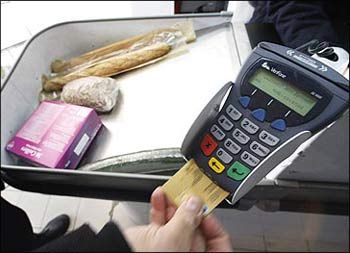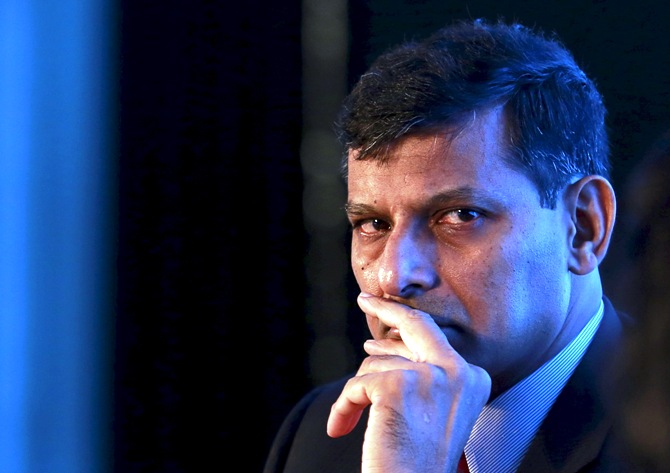There are concerted efforts to enhance the use of technology and move towards a 'less-cash' society.
 In efforts to move towards a cashless society, the Reserve Bank on Tuesday said it will come out with a concept paper on promoting electronic payments, especially in smaller towns, by November-end.
In efforts to move towards a cashless society, the Reserve Bank on Tuesday said it will come out with a concept paper on promoting electronic payments, especially in smaller towns, by November-end.
"With growing financial inclusion, there are concerted efforts to enhance the use of technology and move towards a 'less-cash' society.
"In order to promote electronic payments and use of cards for transactions, the Reserve Bank will put in the public domain a concept paper for proliferation of card acceptance infrastructure in the country, especially in the tier III to tier VI centres, by end-November 2015," it said.
In its Fourth Bi-monthly Monetary Policy statement, the RBI also said it has issued Rs 100, Rs 500 and Rs 1,000 denomination banknotes with a new numbering pattern with ascending order of the size of the numbers from left to right.
"This is being introduced in a phased manner for all denominations of banknotes," the RBI said.
Further, with a view to making identification of banknotes easier for visually challenged persons, the process for introduction of additional identification marks has been initiated and is being introduced in Rs 100, Rs 500 and Rs 1,000 notes.
In another move, the RBI said exchange traded currency futures and options will be introduced in three cross-currency pairs -- EUR-USD, GBP-USD and USD-JPY.
This is being done with a view to enabling direct hedging of exposures in foreign currencies and to permit execution of cross-currency strategies by market participants.
The RBI said necessary guidelines will be issued in consultation with SEBI by end-November 2015.
At present, exchange traded currency derivatives include futures and options in four currency pairs -- USD-INR, EUR-INR, GBP-INR and JPY-INR.
To provide more flexibility to market participants in managing their currency risk in the OTC market and for making hedging easier, the RBI said that it has been decided to increase the limit for resident entities for hedging their foreign exchange exposure in the OTC market from $250,000 to $1million without the production of any underlying documents.
The Reserve Bank also proposed to comprehensively review the documentation related requirements in the OTC market.
The possibility of participation by financially sophisticated investors up to certain limits in currency markets without underlying exposure will also be examined.
Revised draft of the existing framework will be issued for public comments by end-December 2015.
While the currency futures market has grown, the RBI said participation in this segment has been restricted to a few categories of entities.
In order to diversify the participation profile in the currency futures market, stand-alone primary dealers (PDs) will be permitted to deal in currency futures contracts traded on the recognised exchanges. Guidelines in this regard will be issued by end-November 2015.
Also, in order to further develop the repo market, a broad framework for introduction of electronic dealing platform/s for repo in corporate bonds will be designed in consultation with the SEBI, the RBI said.
The central bank further said it is proposed to permit short sale by a Primary Memeber to its gilt account holder (GAH) and also to treat purchase by a primary member from its GAH as a cover transaction. Guidelines in this regard will be issued by end-October 2015.









 © 2025 Rediff.com -
© 2025 Rediff.com -